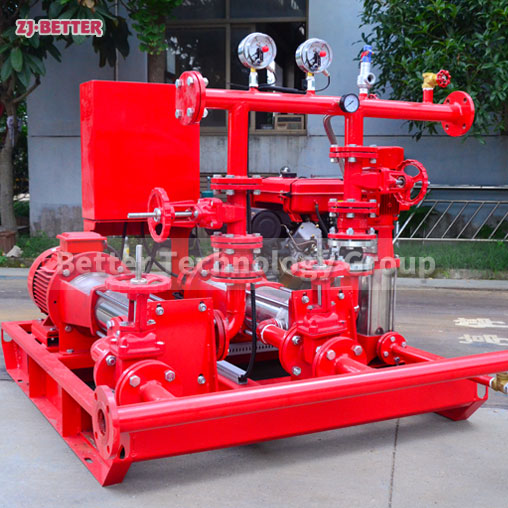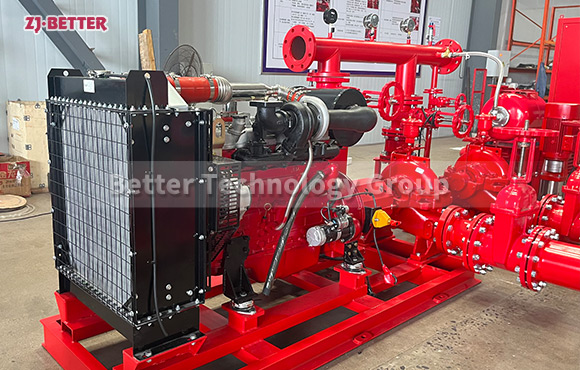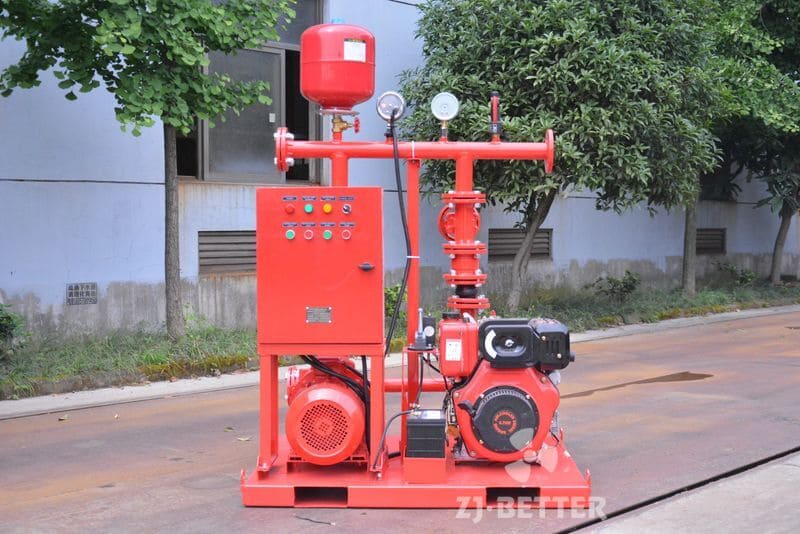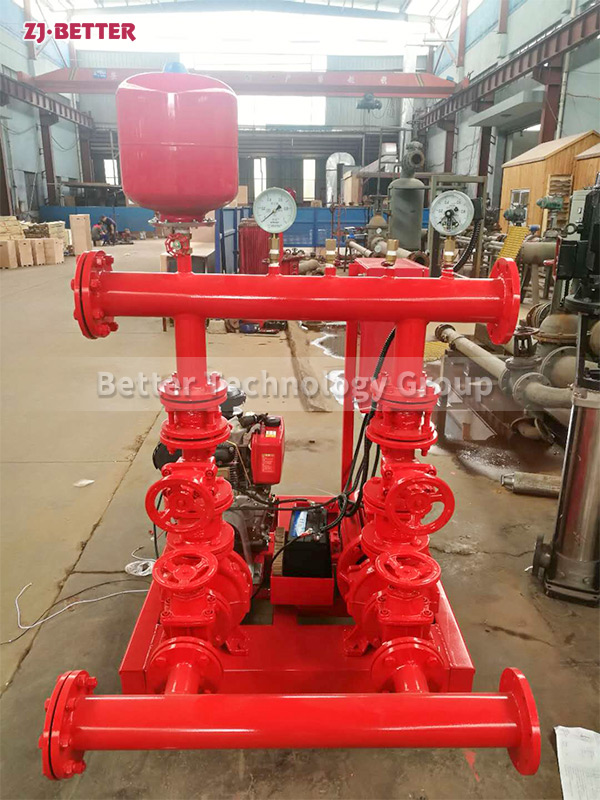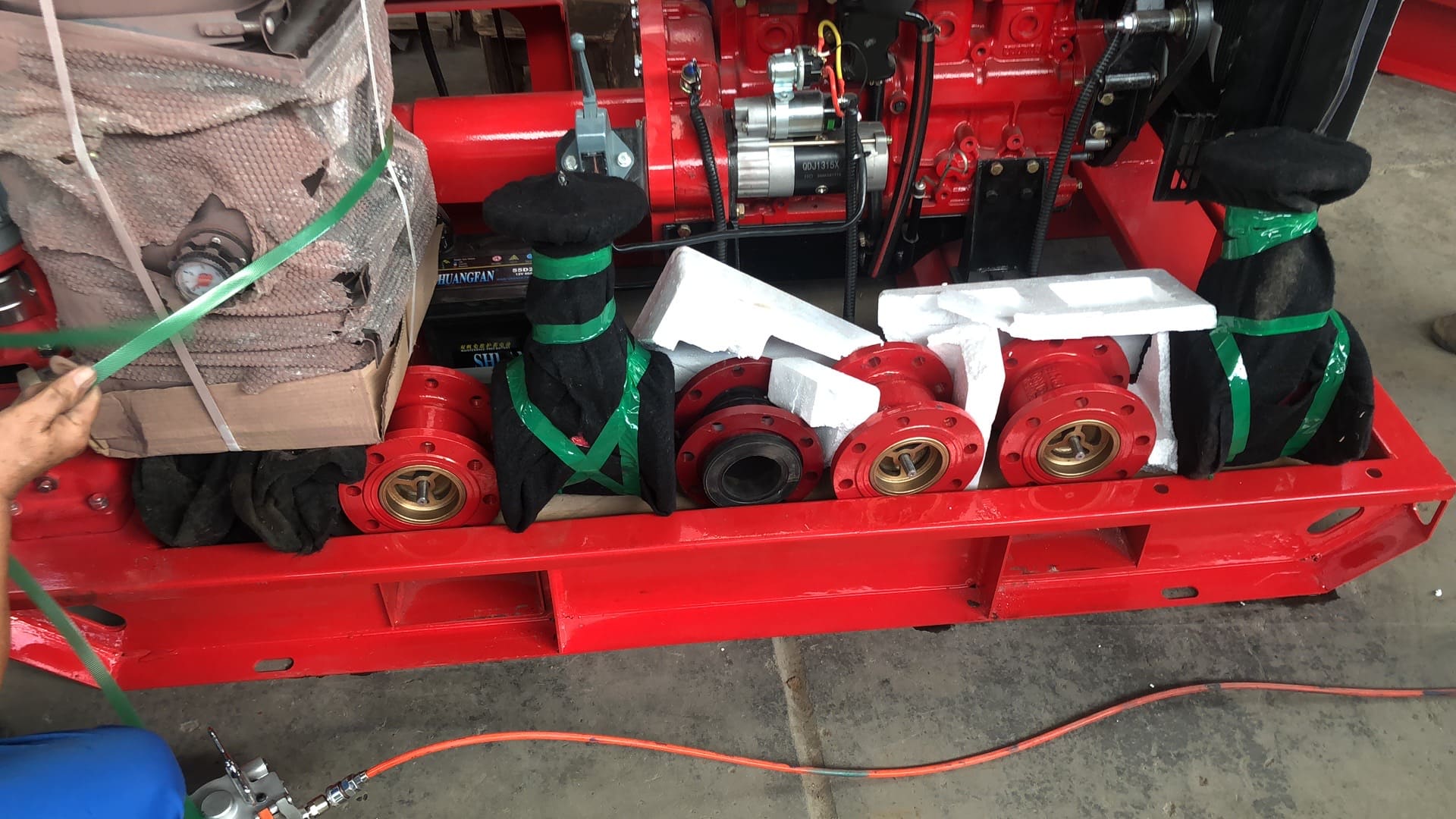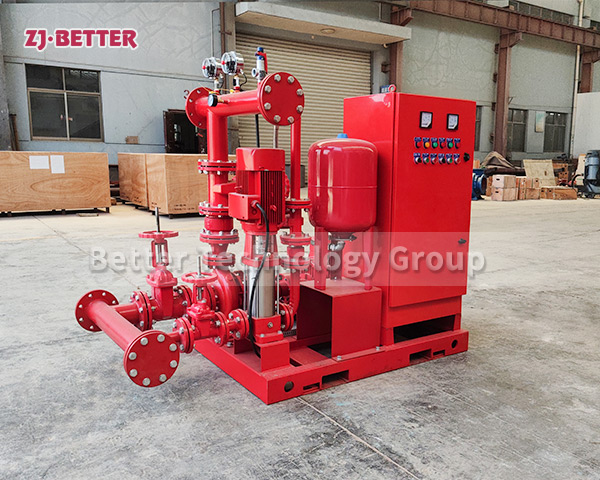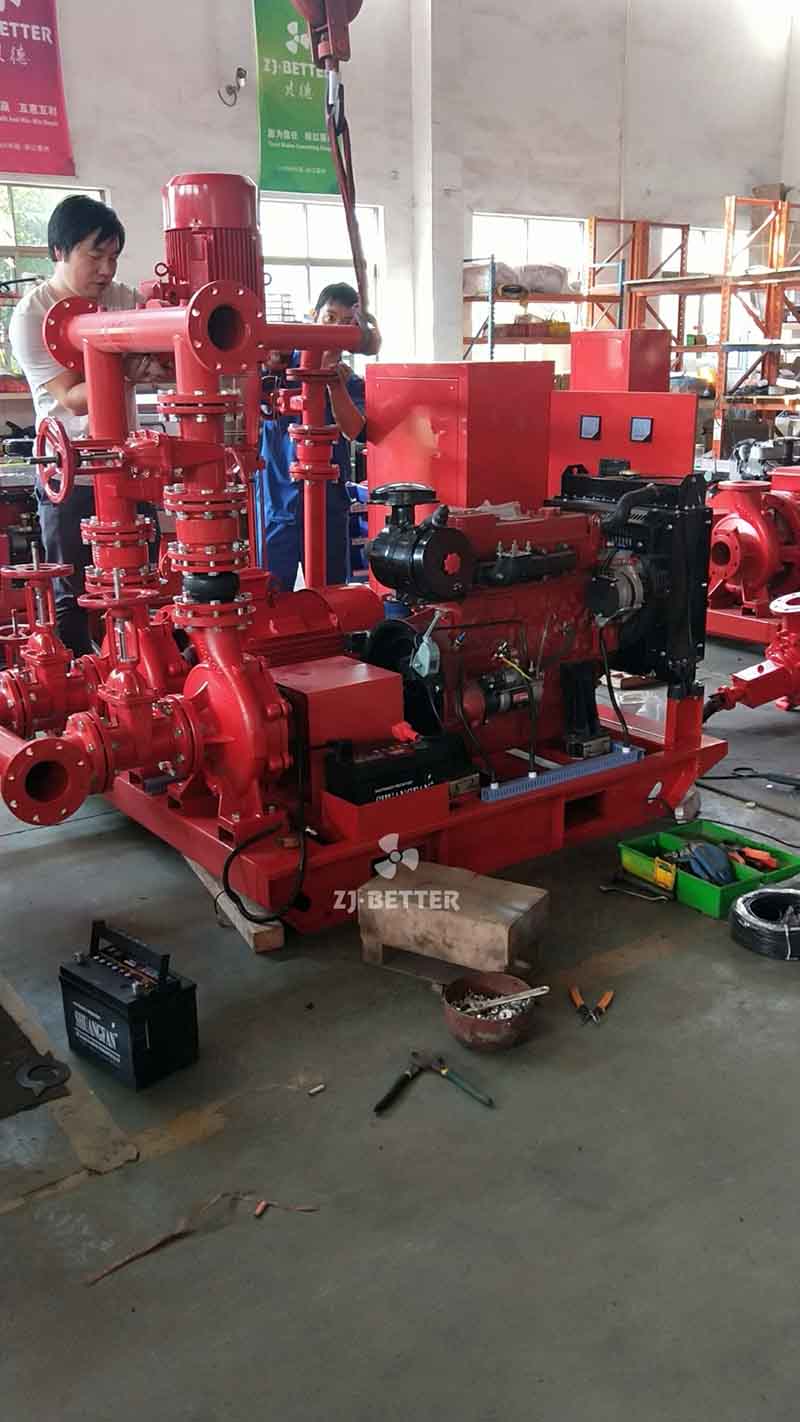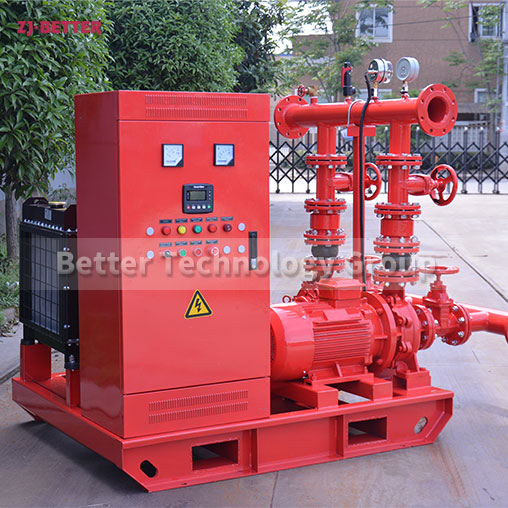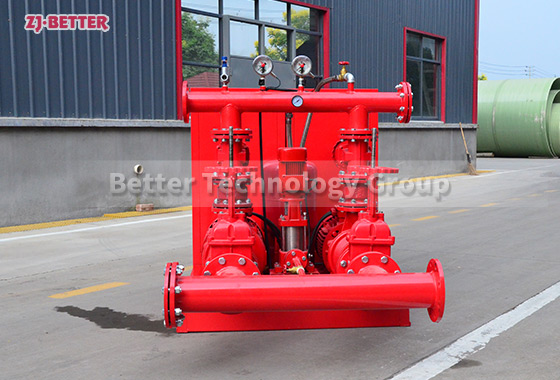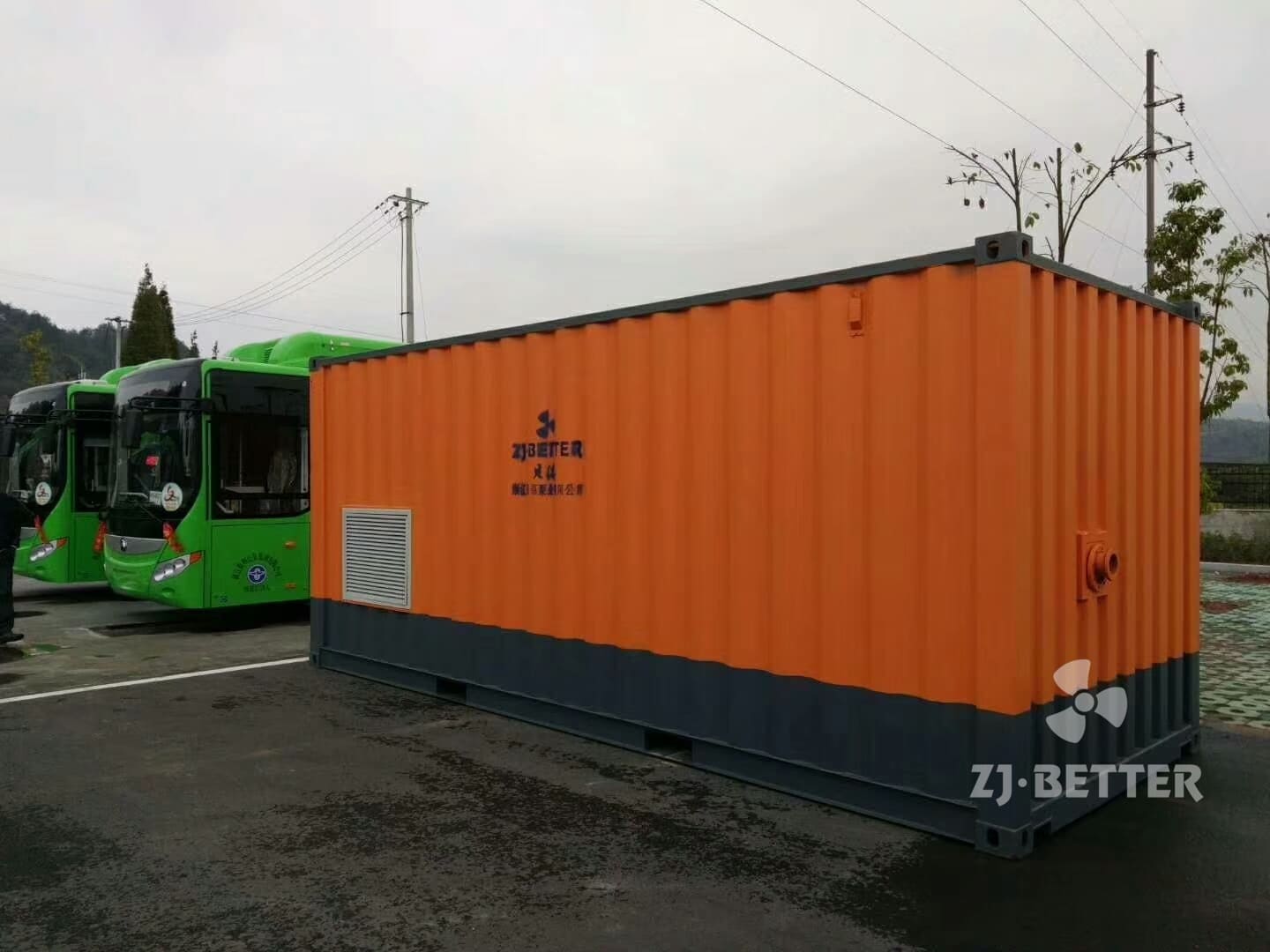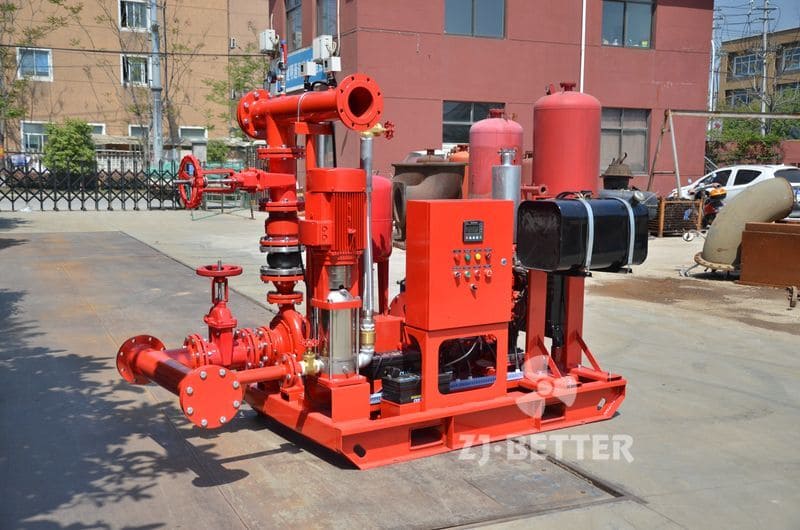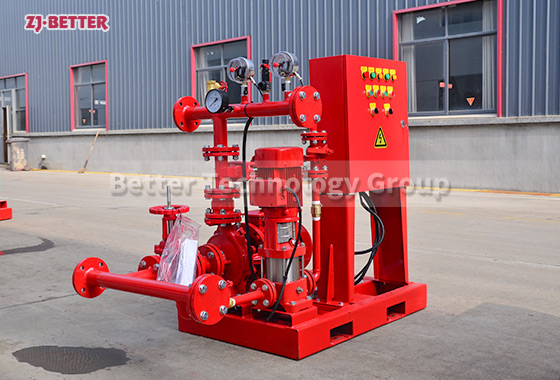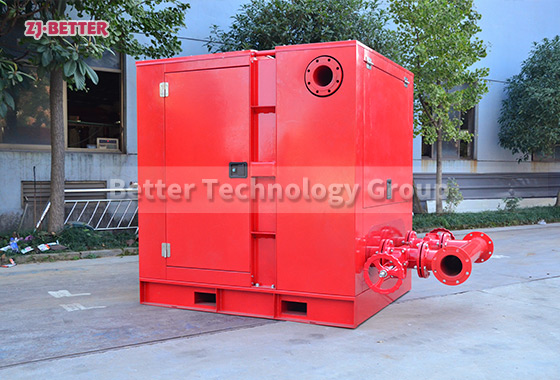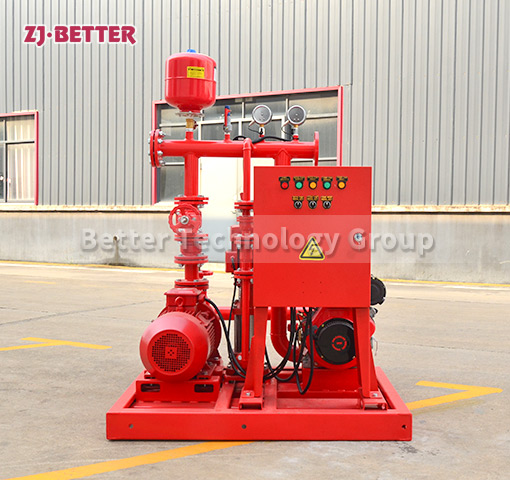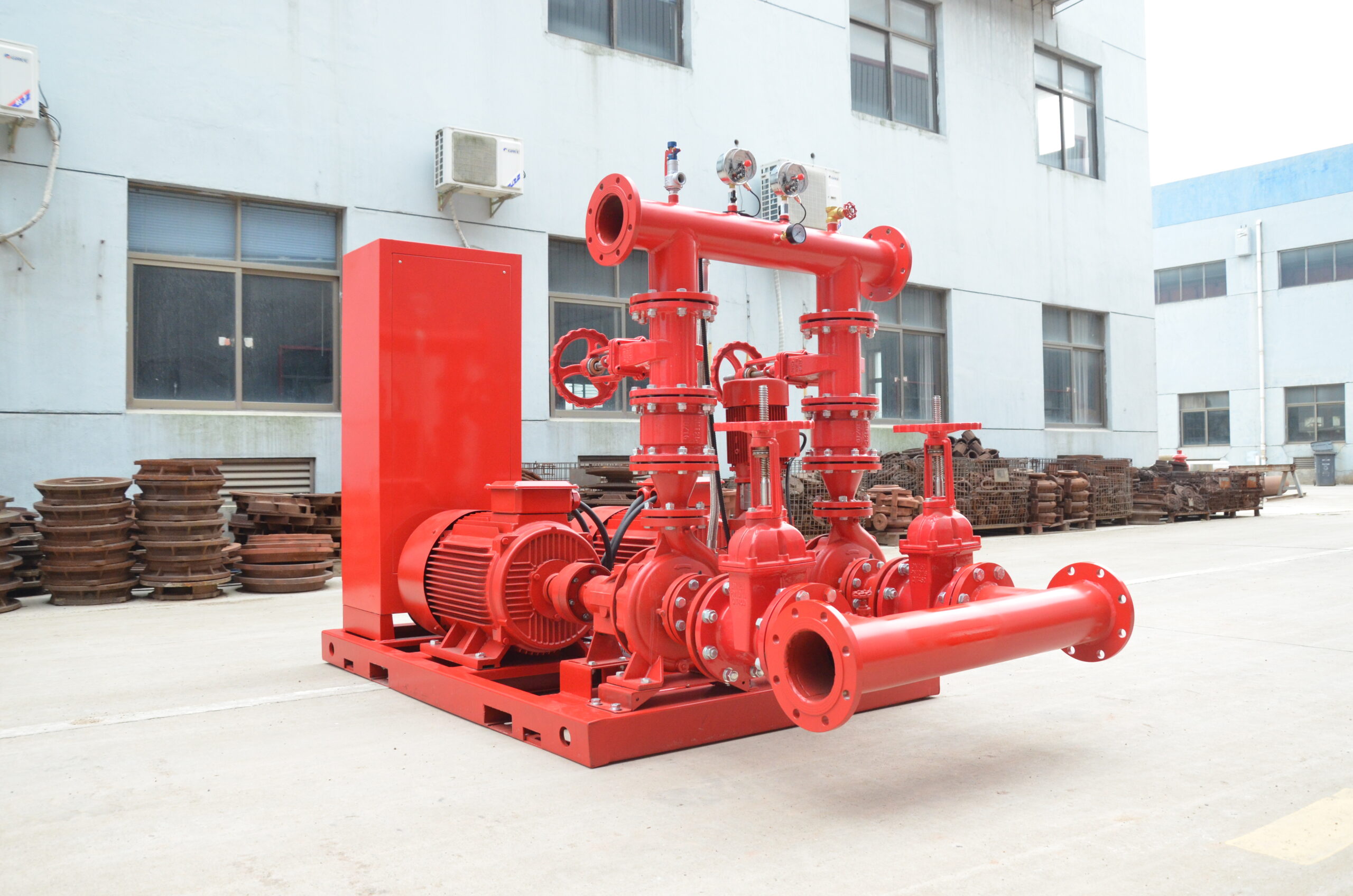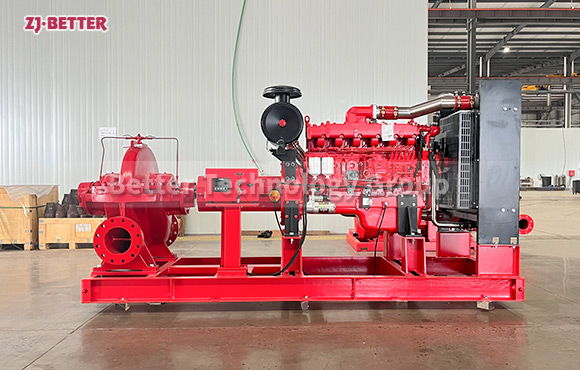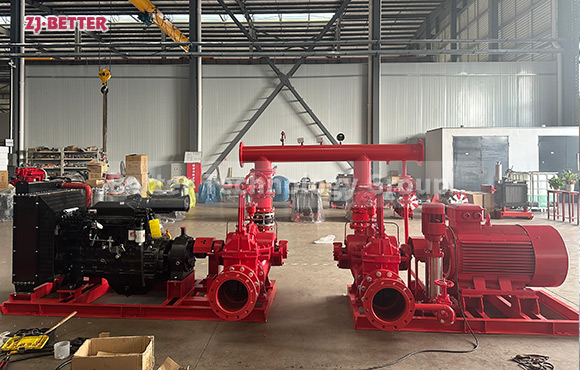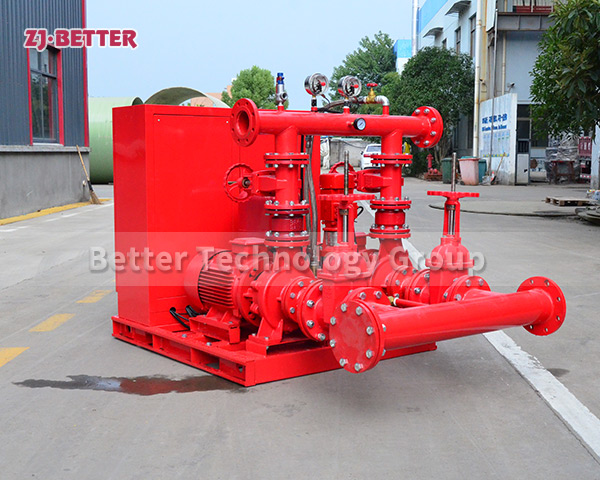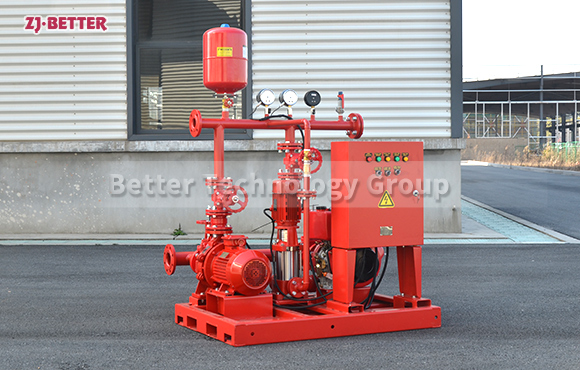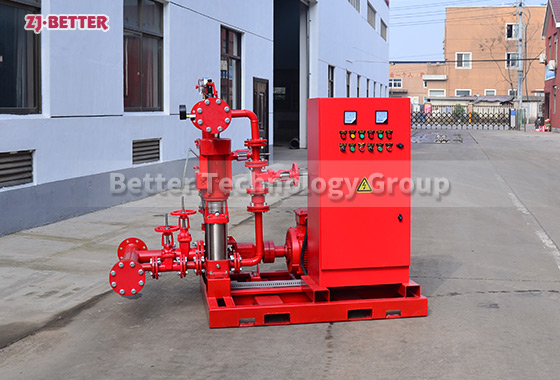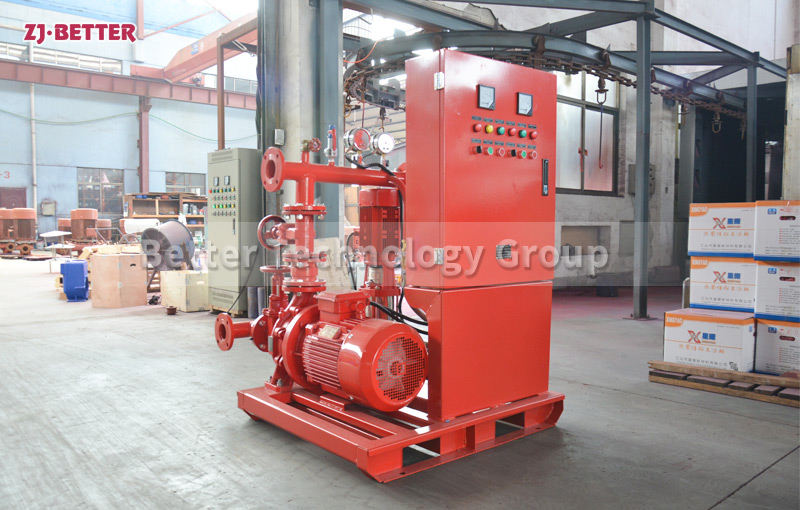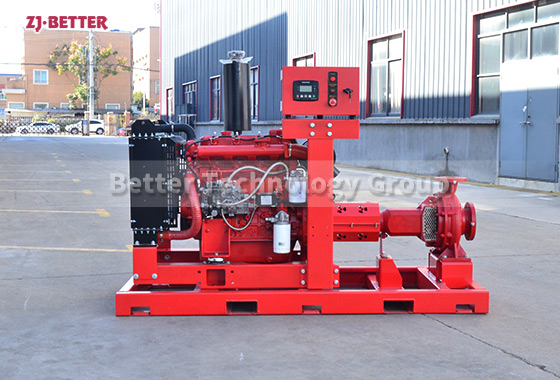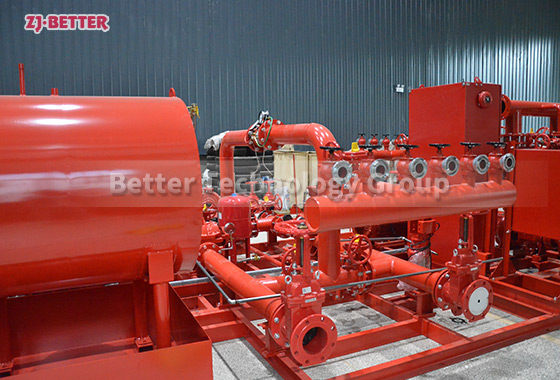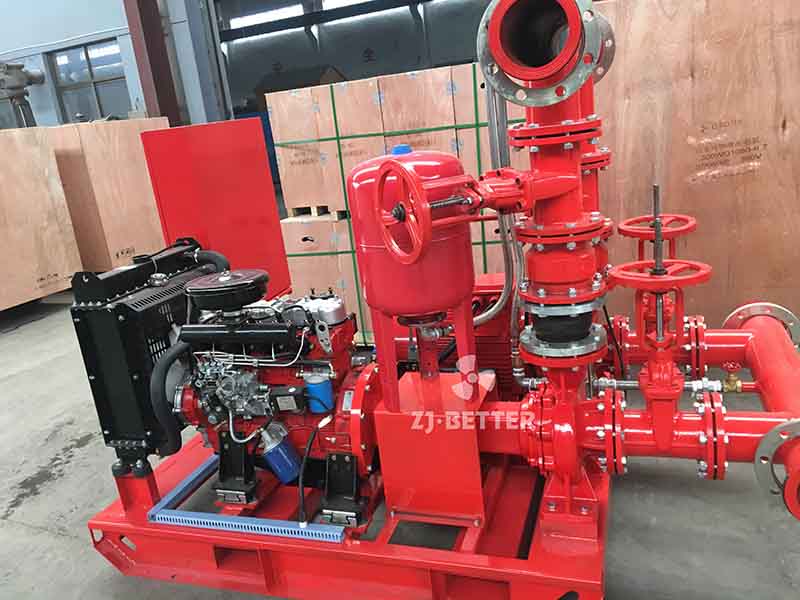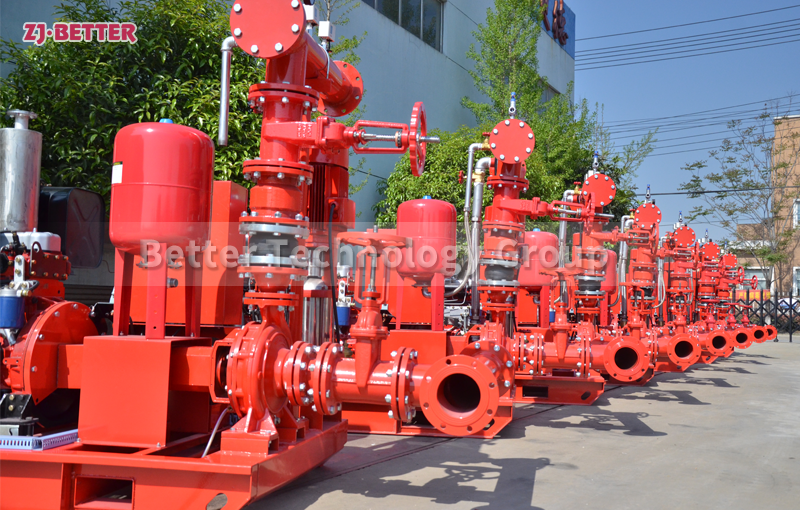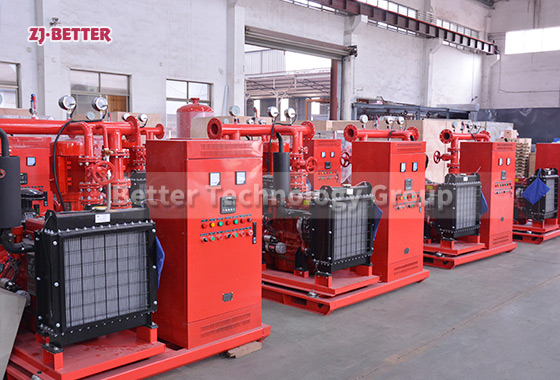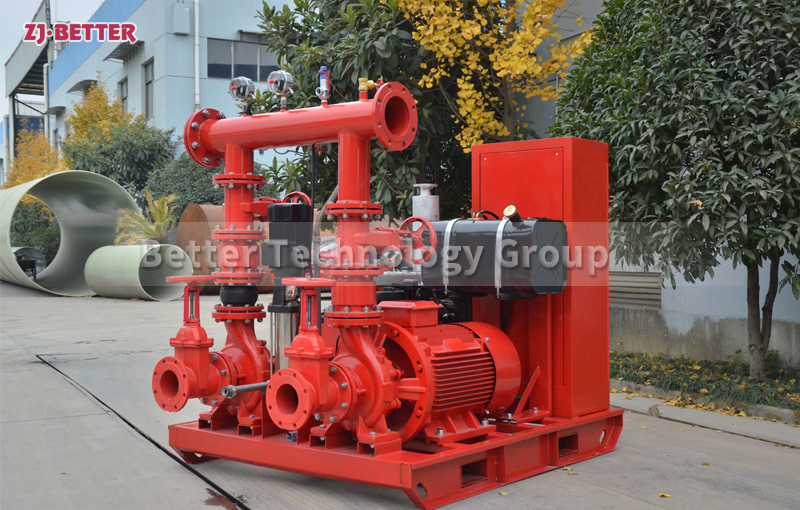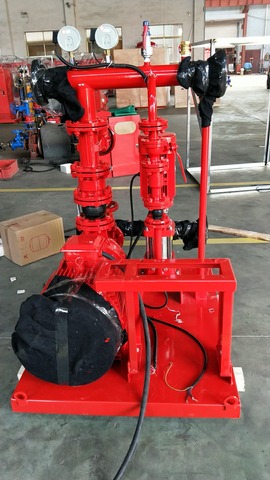What is a horizontal EDJ fire pump set?
The multi-stage fire pump consists of two parts: the motor and the pump, and the motor and the pump are coaxial. The structure of the pump consists of pump body, impeller, pump cover, mechanical seal and so on. The inlet and outlet of the pump are on the same horizontal axis and have the same caliber specification, so the loading and unloading is very convenient, and the floor space is small. The pump is fitted with a base for easy installation and increased pump stability. It is used to transport clear water without solid particles, liquids with physical and chemical properties similar to water. It is mainly used for pressurized water delivery in fire protection system pipelines, and is also suitable for industrial and urban water supply and drainage.
1. Easy to maintain, no need to remove the pipeline, just remove the pump cover nut, and then the motor and transmission components can be taken out for maintenance;
2. The structure is compact, the volume is small, and the appearance is beautiful. Its structure determines the size of the installation area, and its center of gravity coincides with the center of the pump foot, thereby improving the stability and service life of the pump;
3. Since the inlet and outlet of the multi-stage fire pump are on the same horizontal axis, the diameter and specification are the same, and the pipeline connection is convenient and easy to disassemble;
4. Advanced hydraulic model, high efficiency and good performance;
5. Smooth operation, low noise and high concentricity of components;
6. The shaft seal uses a high-quality mechanical seal, so the wear resistance is very good, there will be no leakage, and the service life can be extended.

